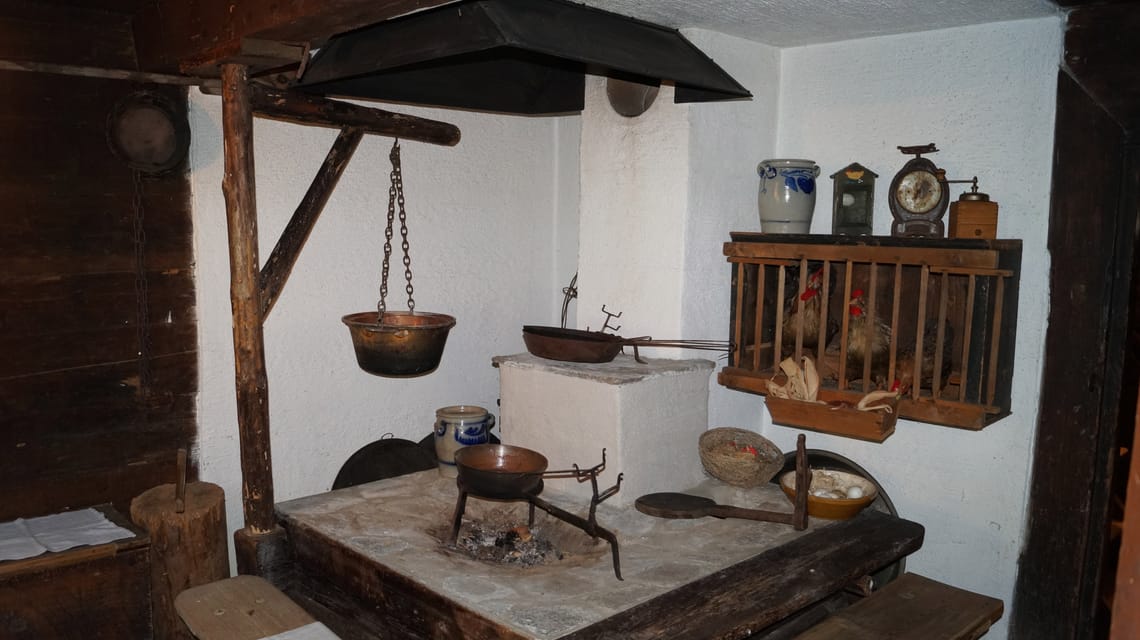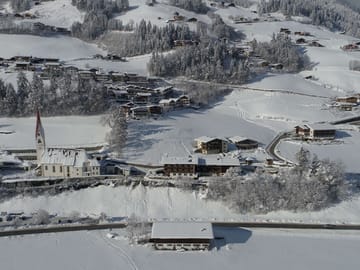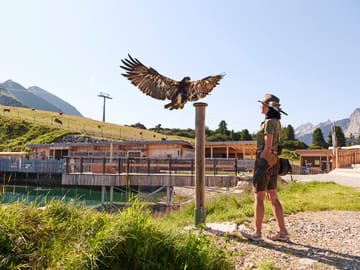The Strasserhäusl
and history of the Strasser children
From the outside, it is hard to believe that music history was made in this ancient log cabin. The Strasser family lived here in the 19th century, whose children performed the Christmas carol "Silent Night! Holy Night!" to audiences in Leipzig in 1831 - from where it spread all over the world. Walls clad with weathered wooden beams, a wood-fired range in the parlour and bull's eye window panes, wrought-iron fittings on the doors - with its extensive collection of rural antiques, Strasserhäusl Museum in Laimach reveals the frugal life the Zillertal mountain farmers endured in bygone days. The 300-year-old timber cabin achieved fame, however, for an entirely different reason: the Strasser family lived here at the beginning of the 19th century, whose children sang the song "Silent Night! Heilige Nacht!" (Silent Night! Holy Night!). They had been introduced to the song by the Rainer singers in Zillertal and performed the piece in Leipzig, from where it gradually spread all over the world. The museum is also dedicated to this historic attribute. Former home of the famous Strasser family of singers, who made the song "Silent Night, Holy Night" world famous. The former home of the Strasser children, dated 1714 and listed as a historic monument, was lovingly converted into a museum by Mrs. Rosa Kraft in 2000. After her unexpected death in April 2020, ownership of the building was returned to the community of Hippach.
Johann Kainzner, appointed by the local council as overseer of the museum, invested many hours together with volunteers to renovate the individual rooms which now house old woodwind instruments, as well as various tools from a bygone era. The history of the Strasser children is clearly narrated in the information room. A memorial plaque is dedicated to Rosi Kraft. The museum was reopened in November 2021. The municipality of Hippach is seeking to establish an association in order to inspire more people to become interested in the history of the "Larks from the Zillertal" and their travels, during which they introduced the song "Silent Night". to the wider world.
The History of "Silent Night, Holy Night"
“Silent Night, Holy Night" was composed during bleak times All Europe suffered after a volcanic eruption in Indonesia (Mount Tambora) in 1816. The "years without summer" followed and harvests were lost. Terrible war years impoverished the population and famine was the result. It was during these dire times that "Silent Night, Holy Night" came into being. Josef Mohr first wrote just the poem, "Silent Night, Holy Night," in 1816 in Maria Pfarr in Lungau. In 1818, on 24th December, "Silent Night, Holy Night" was performed for the first time in St. Nikola Church in Oberndorf. Its composers were Oberndorf assistant priest Josef Mohr and Arnsdorf teacher, Franz Xaver Gruber.
Popularisation of "Silent Night" by the Strasser children
Sheer need forced the Strasser children abroad. Dressed in traditional costume, like their father, they sold gloves made of fine leather, linen goods, undergarments and oil products from Zillertal. By singing in the market square, they attracted ever-increasing attention. Their songs told of their homeland, the high mountains, love and death - and they almost always yodelled. Jakob Katschthaler (1776 - 1835), school teacher, organist and Hippach choirmaster since 1802, was their talented teacher. He knew the Strasser children well. Not only as their school teacher, but also as their choirmaster. They certainly learned the majority of their repertoire from him. It is assumed that he also introduced them to "Silent Night, Holy Night", brought to Fügen in 1819 by Zillertal-based organ builder, Karl Mauracher. Josef Rainer, a brother of the original Rainer singers and innkeeper in Fügen, is also said to have enthusiastically recommended them to perform this song in Leipzig.
The Strasser Children captured the attention of many
Franz Alscher, organist and cantor of the Catholic parish in Leipzig, invited the "Strassers" to sing the song at Christmas Mass. On 19th January 1832, they performed during the intervals of a concert at Leipzig Gewandhaus. Publisher A. R. Friese from Dresden recorded the song along with three other songs by the Strasser singers. This collection is said to have been published in 1833, with the title: "Vier ächte Tyroler Lieder - Four Original Tyrolean Songs".
Worldwide popularisation of the song
Zillertal singing groups became famous - thanks to the spread of "Silent Night, Holy Night", from Austria to rest of the world. Today, this most famous Christmas carol is sung in over 300 languages and dialects. It is to be hoped that the carol will also be passed down to future generations in keeping with the spirit imbibed by Mohr and Gruber. There is hardly any scope for alternative interpretation anyway, as even the smallest changes to the song would be perceived as disturbing. Had this song never been created, the "great wonder" of Christmas would simply not be the same!








